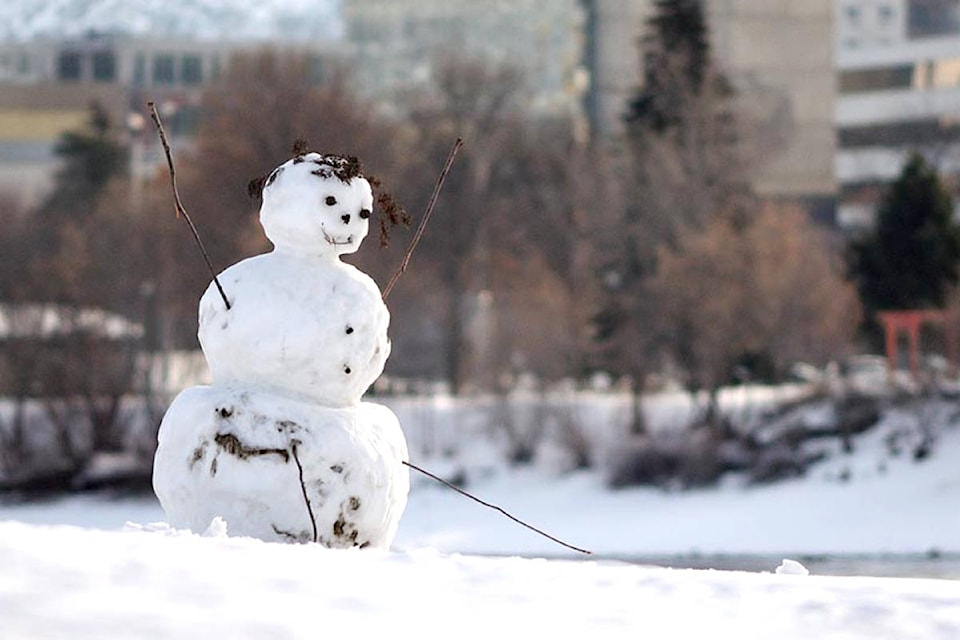Kamloops This Week
Saturday’s snowstorm dumped 15.4 centimetres of snow on Kamloops, according to data recorded at the airport — though there were reports of up to 25 centimetres being measures in Aberdeen and other higher-elevation areas of the city.
Regardless, Saturday’s snowfall, even at 15.4 centimetres, represented the snowiest Feb. 17 since weather records began in the late 1800s and the snowiest day in the Tournament Capital in five years.
The snow will add to a snow pack in the region that is above or at normal levels.
According to the River Forecast Centre, the Feb. 1 snow survey shows the South Thompson snowpack at 104 per cent of normal and the North Thompson snow pack at 92 per cent of normal.
By early February, nearly two-thirds of the annual B.C. snow pack has typically accumulated.
High snow packs in the South Interior, including the South and North Thompson basins, may be an early indication of increased seasonal flood risk for the upcoming freshet season.
Across British Columbia, the Skagit (165 per cent of normal), Vancouver Island (148) and Lower Fraser (141) basins are most snow-laden, while the Northwest (51), Stikine (67) and Central Coast (82) basins are furthest from normal levels.
Overall, the province has a slightly above normal snow pack for Feb. 1, with the average of all snow measurements across the province at 108 per cent, increasing significantly from 96 per cent of normal on Jan. 1.
Looking ahead, the River Forecast Centre notes La Niña conditions are present, with negative sea surface temperature anomalies across much of the eastern and central sections of the equatorial Pacific Ocean.
“Over the past month, sea surface temperature anomalies have steeply declined in the northern Pacific Ocean off the coast of the B.C., with cooler than normal temperatures now dominant,” the centre said.
The Climate Prediction Centre at the U.S. National Weather Service is forecasting a high likelihood of La Niña persisting through the winter, with a transition to El Niño southern oscillation-neutral conditions expected during the spring.
Typically, La Niña is linked to cooler winters across B.C. and snowpacks tend to be higher than normal. Over the past six weeks, the ministry noted, weather patterns have aligned with typical La Niña weather, bringing significant growth to the provincial snow pack.
Seasonal forecasts (February to April) from Environment and Climate Change Canada are indicating an increased likelihood of normal temperatures across western and southern British Columbia and below-normal temperatures in southeast and northern B.C. Short-to-medium-term forecasts are suggesting near normal temperatures through February.
The River Forecast Centre will provide an updated seasonal flood risk forecast on March 8.
